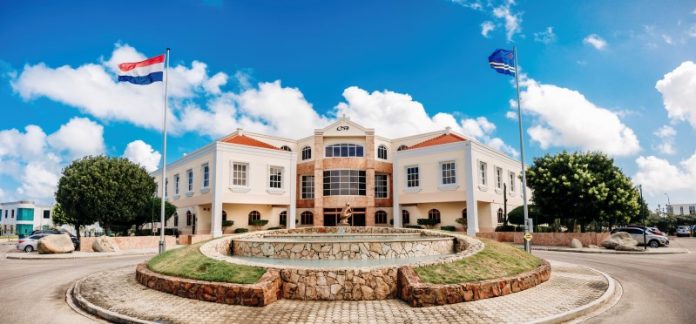Today the Centrale Bank van Aruba (CBA) published the State of the Economy of 2019. This publication provides a synopsis of the local and international economic developments of this period. The domestic highlights are presented below, including a summary of main economic indicators.
Economic contraction in 2019.
Aruba’s economy is estimated to have contracted by 0.7 percent in real terms in 2019, according to the latest Economic Outlook publication of the CBA. The slow-down in the economy was mostly driven by a further slack in the consumption component. Consumption indicators such as banking credit and car sales pointed towards a decline. Available data indicated positive results in the tourism sector for the year, while investment data showed a pick-up in investment activities. Tourism related activities remained strong, as available data on stay-over visitors (both including and excluding Venezuela) showed further gains, with the average length of stay remaining relatively unchanged.
Increase in consumer price inflation and trade deficit.
The 12-month average CPI inflation accelerated from 3.6 percent at end-December 2018 to 4.3 percent in December 2019, caused primarily by rising food- and communication prices. The real exchange rate of the florin vis-à-vis the U.S. dollar increased steadily since the first quarter of 2018.
Aruba’s trade deficit, as reported by the CBS reached Afl. 2,199.1 million in December 2019, i.e., a widening of Afl. 72.4 million (+3.4 percent) compared to December 2018. The attributing factors are increased imports of construction related materials.
Surplus on the balance of payments.
The current account of the balance of payments recorded an Afl. 115.4 million surplus during 2019. This surplus was a substantial turnaround compared to 2018, when an Afl. 38.9 million deficit was recorded. This positive development was mainly related to the strong performance in the tourist sector that pushed up the surplus on the services account by 3.9 percent, combined with a smaller deficit on the income account.
The financial account resulted in a net lending abroad of Afl. 104.8 million in 2019, compared to a net borrowing of Afl. 44.2 million in the previous year.
Total money supply stood at Afl. 4,569.4 million at year-end 2019, a growth of Afl. 191.8 million compared to December 2018. The expansion in money supply was the result of an Afl. 255.4 million increase in net domestic assets, which was partially offset by an Afl. 63.7 million drop in net foreign assets. The contraction in net foreign assets was mainly related to domestically financed repayments of foreign private loans and the repurchases of equity from nonresidents.
Improvement in the fiscal deficit.
The government of Aruba recorded a fiscal deficit (on a cash basis) of Afl. 3.1 million or 0.1 percent of GDP in 2019, reflecting an improvement of Afl. 42.1 million compared to a year earlier. The narrowing of the fiscal deficit was due to a 7.9 percent increase of in government revenue, pushed up by gains in both tax and non-tax revenue. The higher government revenue was partially offset by a 4.8 percent uptick in government expenditure. The latter was mainly caused by higher outlays on goods and services. Consequently, government debt reached Afl. 4,318.3 million at the end of 2019, up Afl. 19.2 million from 2018. Meanwhile, the estimated year-end debt-to-GDP ratio fell from 75.0 percent at end-2018 to 72.9 percent at end-2019.
| Table: Main economic indicators | |||
| Indicator | 2018 Jan-Dec |
2019 Jan-Dec |
Change |
| Hotel revenue per available room (US$) | 218 | 234 | 16 |
| Stay-over visitors (numbers)* | 890,134 | 926,946 | 36,812 |
| Cruise visitors (numbers) | 815,161 | 832,001 | 16,840 |
| Construction permits (Afl. million) | 463 | 857 | 394 |
| Imports of machinery and electrotechnical equipment (Afl. million) | 324.9 | 385.1 | 60.1 |
| Turnover tax receipts (excl. BAVP, in Afl. million) | 104.5 | 109.5 | 5.0 |
| Taxes on income and profit (Afl. million) | 498.8 | 486.7 | -12.1 |
| Twelve-month average rate of inflation (percent) | 3.6 | 4.3 | 0.6 |
| Government debt-to-GDP (ratio) | 75.0 | 72.9 | -2.1 |
| Sources: CBA, AHATA, ATA, CBS. | |||
The complete publication is available on the CBA’s website (www.cbaruba.org).




















